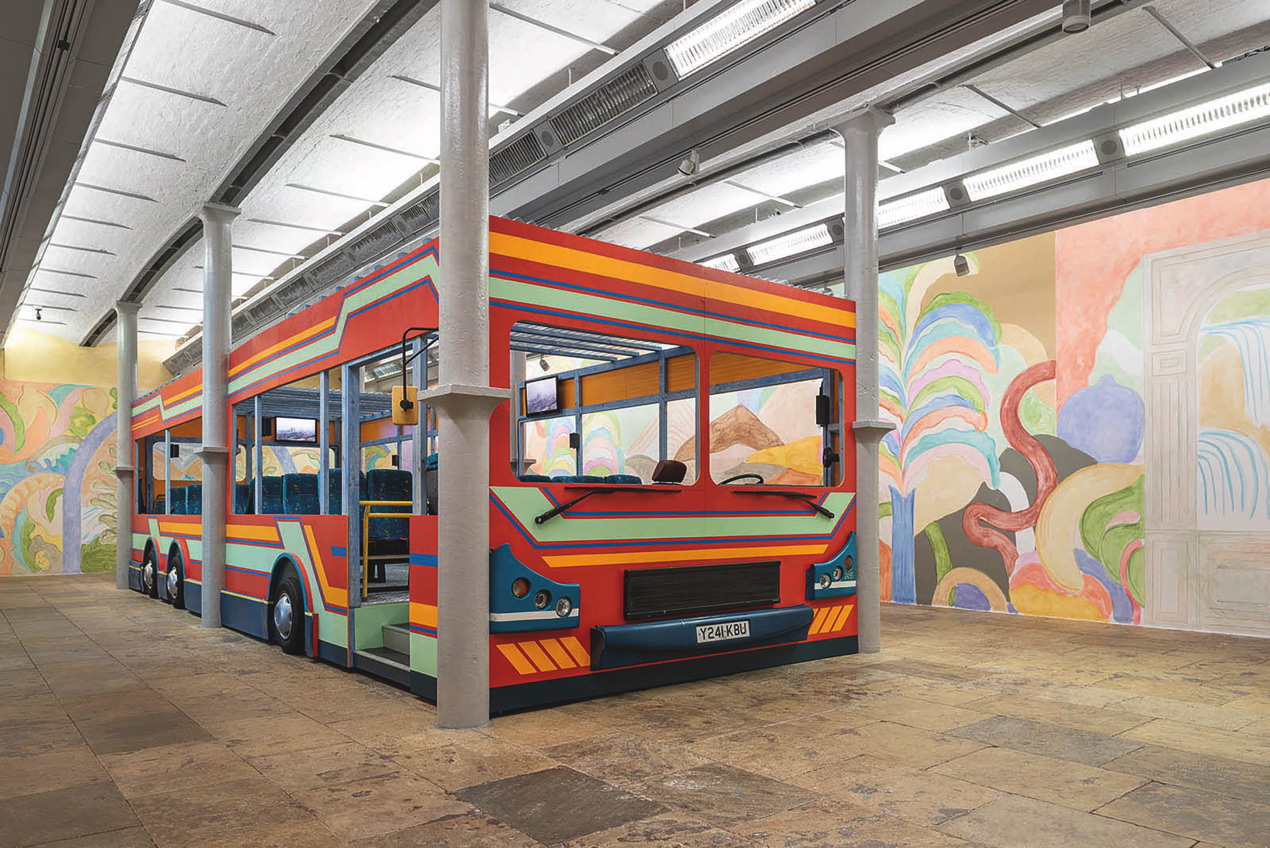Sol Calero: El Autobús
Artist Sol Calero has built a bus in Tate Liverpool and invites people to get on board and take a trip to her native South America
Created by Berlin-based, Caracas-born artist Sol Calero earlier this summer, El Autobús, currently showing in Tate Liverpool’s ground floor gallery, is bold, immersive and transformative.
Inspired by the artist’s travels in her native South America, the life-size recreation of a brightly decorated bus aims to create dialogue between strangers and represent several threads of Venezuelan culture. Visitors to the gallery can step on board the work, sit on the real bus seats and watch the world go by on video screens dotted around the vehicle. Dialogue accompanies the images, telling tales of journeys into and around entirely fictional places.
“I’ve travelled a lot and I was inspired by this idea of taking a trip and the expectation of what you’re going to find along the way,” explains Calero, who moved to Europe aged 17, going on to study in the Netherlands, Spain and England. “The form of a bus became the medium as it’s a way of representing moving through a landscape. An aeroplane is very much a way of getting from one point to another. Travelling on land is much more rewarding in so many ways, so much more beautiful.”
The majority of Calero’s work is large, bright and confident, often recalling her youth through the use of vast walk-in paintings and recreations of architectural features. A theme common to many of these is the representation and subsequent deconstruction of South American stereotypes, an idea continued with El Autobús.
“When I first began to look at these stereotypes I realised they were there for a reason and it’s often very difficult to separate what’s simply meaningless from what is reality. People often see Latin America as playful and colourful and these are stereotypes but also a reality and a genuine definer of identity.”
The artist says the piece plays with and exploits these preconceptions and explains why the places described by the audiovisual elements of El Autobús are fictional.
“There are references to things I remember from growing up in Venezuela but it’s all really about letting audiences use their imaginations rather than concentrating on specific, researched places which might prove distracting. It’s important that you really feel the described places.”
Liverpool itself appears to be playing a positive role in El Autobús’s success too. Recalling, with a laugh, how she found the city’s inhabitants so sociable, Calero says: “I immediately knew my work would go down well here because the people are so chatty. No one here is shy. The few hours I’ve spent in the room with the finished work were great, just watching visitors taking their time in there.”
Indeed, visiting the project in such a light, colourful room – its interior decorated with vivid murals – is an expansive rather than restrained experience, the narration and films adding an often hypnotic quality.
“I like the idea of giving people a collective experience in a cultural space where people can communicate,” Calero continues, concluding: “I like to think that with El Autobús I’ve created something that’s much more complex and fulfilling than a work visitors simply stand and look at.”
Sol Calero: El Autobús, Tate Liverpool until 10 November

Leave a reply
Your email address will not be published.